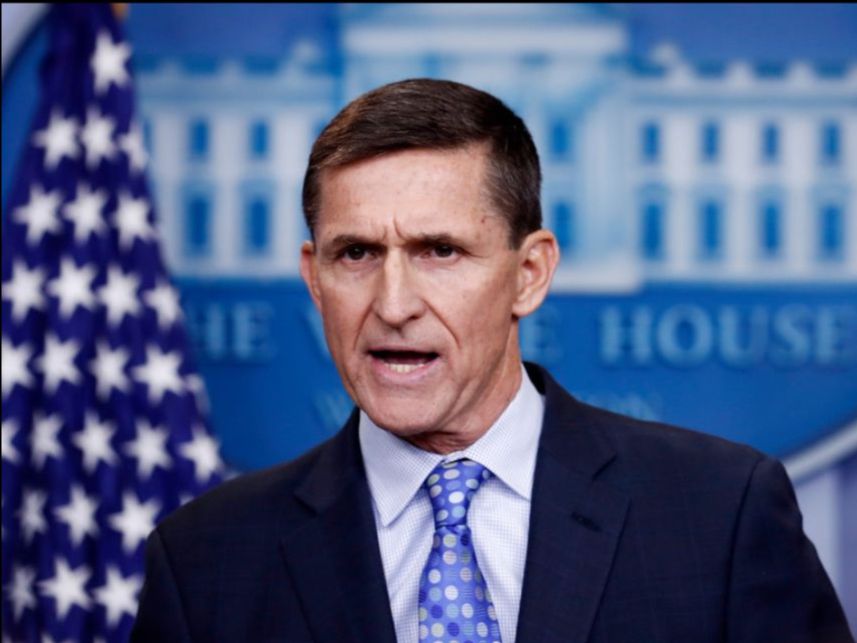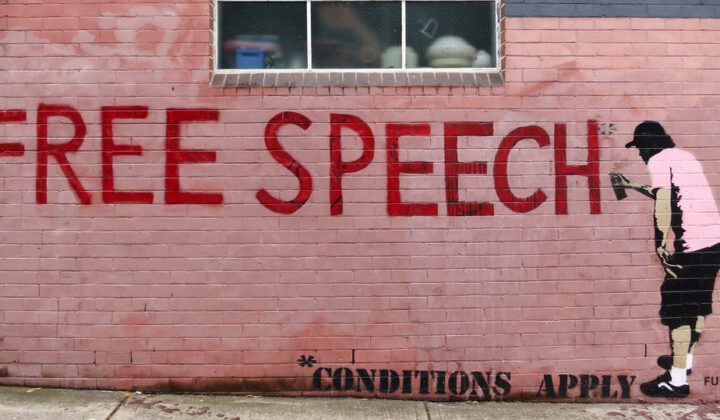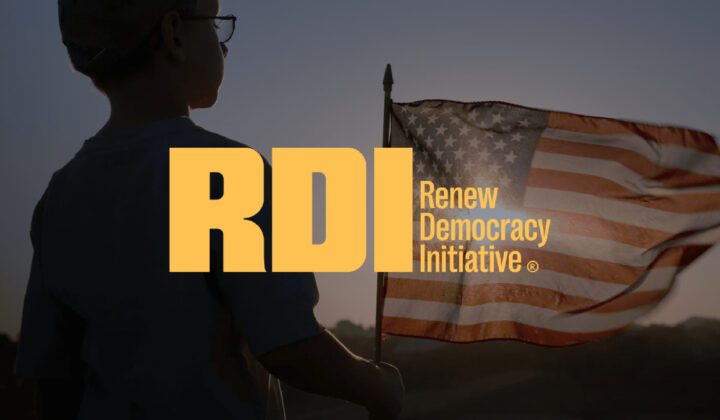Back in December 2017, President Trump’s former National Security Advisor Michael Flynn pleaded guilty to lying to the FBI about conversations he had with Russian ambassador Sergey Kislyak. But shortly after ending his cooperation with Special Counsel Robert Mueller, Flynn began mounting an aggressive campaign to withdraw his guilty plea. Flynn’s defense team has attempted to show that the FBI set him up and entrapped Flynn in a lie. A new note, unsealed at the request of Flynn’s defense team, has gone viral on Twitter and across social media. The note was written by a senior FBI official involved in Mueller’s investigation discussing interrogation tactics.
Flynn’s defense team touts this note, as well as other documents, as “smoking-gun” evidence of entrapment and a “set up.” And President Trump, arguably Flynn’s biggest ally, tweeted over the weekend: “The Russia Hoax is the biggest political scandal in American history. Treason!!! Lets see how it ends????”
- Did the FBI entrap Flynn or “set him up”?
The answer is no. First thing’s first: what is entrapment? According to a Washington Post op-ed by former Assistant US Attorney Randall D. Eliason, “Entrapment requires evidence that the government so pressured the defendant that his will was overborne and he committed a crime he was not otherwise predisposed to commit.” But no one forced Flynn to lie about his contacts with the Russians. He did so willfully on multiple occasions, including to the Vice President.
Second, the “explosive” note mentioned earlier merely references an interview strategy employed by law enforcement officers all over the country on a daily basis. Indeed, interviewing a subject with the hope, or even the goal, that they will confess to a crime or lie about it—which is itself a crime—is standard practice by law enforcement. And importantly, the investigators were trying to get to the bottom of the Russia investigation, in which Flynn was an important witness.
- Is what the FBI did fair?
The FBI employed the same tactics with Flynn as with any other defendant. And their conduct was legal. According to Federal Statute 18 USC 1001, it is a violation to lie to the FBI if the lie is “material.” And the materiality requirement simply means that it’s the type of lie that could, in theory, change the outcome of the investigation. The hypothetical element is key, as Ken White, former AUSA and co-host of All The President’s Lawyers, discusses. It empowers the investigators to catch a subject in a lie and then possibly use that as leverage for cooperation. Some commentators might believe this to be unfair, despite having never criticized the tactic in the past. But if they really feel this way, they should campaign to change the statute to include a more robust materiality requirement rather than blame the FBI for doing its job.

An Uncertain Peace Undermines Hope of Democracy in Afghanistan
Back in February, the US government reached an agreement with the Taliban in which it promised to begin withdrawing troops from Afghanistan on the conditions that violent conflict would be reduced by 80%, and that the Taliban would both cut off ties with other extremist groups like ISIS and Al-Qaeda and would negotiate with the Afghan government in the hopes of beginning the process of national reconciliation. However, since the agreement was signed, Taliban attacks have increased compared to the same period last year, though they have taken care not to attack American forces. Furthermore, the Afghan government itself has been a serious impediment to negotiations. To date, President Ashraf Ghani has failed to form a unity government with his main political rival Abdullah Abdullah, an important step if there’s any real chance of negotiating with the Taliban. This internal dysfunction has prompted the US government to cut one billion dollars in promised aid to Afghanistan.
- Is the peace agreement worth it for Afghanistan?
For the Taliban, the agreement most certainly is. They have not been forced to disarm; they control large swaths of territory in Afghanistan; and they have secured the eventual withdrawal of their enemy, the United States. Furthermore, because of their strong military position, the Taliban can afford to wait a long time to get the deal they want with the Afghan government.
For the Afghan people, however, the advantages are less obvious. First, the Afghan government was not a party either to the negotiations or the eventual peace agreement between the Taliban and the United States. Second, it is highly questionable that the Taliban will cease their violent activities moving forward, especially given their conduct since signing the peace agreement. And third, even assuming the Taliban negotiate with the Afghan government as part of a power-sharing agreement, they do not exactly make for good partners to build a democratic Afghanistan. To be sure, by no means does Afghanistan have a well-functioning democracy. Corruption and electoral fraud are rampant. Nevertheless, for all the problems in Afghanistan’s government, it ensures far more liberty and opportunity, especially for women, than was available during the period of Taliban rule. Empowering an ultra-fundamentalist group that banned women from education and employment when it was last in power does not bode well for Afghanistan’s democratic future.
At the same time, half a century of brutal armed conflict and occupation has reduced Afghanistan into one of the most underdeveloped countries in the world. If the peace agreement with the Taliban can stabilize the country and provide the Afghan people with security and economic hope without a return of fundamentalist rule, then perhaps it is worth it. This isn’t a tradeoff any people should have to make, but it is the one the Afghan people have in front of them right now.

The Public Can Listen to Supreme Court Arguments Live for the First Time
In an historic break from precedent, the Supreme Court began livestreaming audio of its arguments on Monday. As the most traditional and guarded of the three branches of government, the Court has rejected similar requests in the past. Just last year, Justices Samuel Alito and Elena Kagan argued against the idea because it might lead to misleading soundbites and force the justices to self-censor. The closest the Court has ever come to a live broadcast is same-day release of the transcripts of oral arguments. Given the new challenges posed by COVID-19, however, the Justices have been forced to reconsider.
The first of ten cases, a minor trademark dispute, was heard on Monday. On May 12, the Court will hear cases about Congress seeking President Trump’s financial records.
- Why is this a victory for democracy?
This is America, the world’s oldest continuous democracy. Its citizens should have access to the inner-workings of government, especially during a crisis that threatens to undermine the transparency of our democracy. Furthermore, the Court live-streaming its proceedings could help restore some level of confidence and trust in government at a time when the reserves are low. Indeed, Americans have the opportunity to observe informed argument and reasoned debate about some of the nation’s most pressing legal issues, as well as the respect the different Justices have for one another. This stands in stark contrast to the hyper-partisan and highly theatrical behavior of the Executive and Legislative branches in recent years.
- Should live-streaming become a permanent feature?
Imagine a world in which Supreme Court Justices deliberately say things they know will be picked up by mainstream media and used as talking points. Over the long-term, this could pervert the integrity of the Court as an institution. And another risk is that broadcasting the Court’s proceedings could cause the attorneys to focus on riling up public sentiment in support of their case instead of devoting themselves to convincing the Justices. Furthermore, Justice Sotomayor has stated that she doesn’t think people would actually understand the arguments, saying in 2013, “I don’t think most viewers take the time to actually delve into either the briefs or the legal arguments to appreciate what the Court is doing.”
Ultimately, we should approach this issue with an open mind. It would be imprudent to have a strong opinion on the subject before observing how the process actually plays out.

A Brave Satirist Attacks the Pandemic
The renowned Tanzanian political satirist and cartoonist Godfrey Mwampembwa, better known as Gado, has been using his talents to promote awareness of social distancing measures while also criticizing government incompetence in responding to COVID-19. His recent cartoons ridicule conspiracy theories about the virus and encourage people to stay home. In an interview with the New York Times, he stated that “This is the time when satirists and writers need to be at their utmost vigilance…We should not let our foot off the gas because it’s very important that we ask tough questions.”
Gado’s career has spanned decades and, because of his art’s commitment to holding power accountable, he has taken many African politicians to task, including Tanzanian President Magufuli and the Ugandan President Museveni. The East African newspaper was banned in Tanzania due to his cartoons and when its Kenyan sister paper The Daily Nation dismissed him, he alleged that it was due to political pressure. The efforts that have gone into silencing Gado’s pen is a testament to the power of his art.
- Why should we care about a cartoonist’s work in Africa?
Gado’s work is an important reminder that truly vibrant democracies generate space for creative criticism and satire. There are many ways to transmit arguments and information, and different people prefer different mediums. But satirical art, like an editorial cartoon, is a particularly effective and time-honored way to criticize the corrupt and hold up a mirror to society. For example, MAD magazine influenced the political discourse in the US for decades through its audacious cartoons and other content. Indeed, satire can provoke conversations many fear to have and can condense complex critiques into a few strokes of the pen. And importantly, leaders who abuse or ignore democratic norms and values often have fragile egos. Satire that pokes and prods in sensitive places can serve as a check on these sorts of leaders.
Of course, cartoons, like all other mediums, can at times fail to live up to liberal-democratic values. After apologizing for an antisemitic cartoon that ran in the international edition in 2019, the New York Times decided to discontinue daily editorial cartoons in the edition altogether, depriving many blameless cartoonists of work. The New York Times, which ran a flattering piece on Gado, would do well to learn from him and bring them back!





